It’s been a while since Part 3, I wanted to be very sure of this section so took some time to personally invest further into different crypto’s to make sure I understood the basics, there is still a lot to learn but let’s start with blockchain, this was first described by its mysterious author Satoshi Nakamoto in his white paper “Bitcoin: A Peer-to-Peer Electronic Cash System”, published in 2008.
Due to the amount that needs to be covered and broken down we’ll keep these blogs short.
 When we discuss blockchain, we introduce several key words which need to be explained, Hash and Nodes.
When we discuss blockchain, we introduce several key words which need to be explained, Hash and Nodes.
The concept of the blockchain is to ensure that everyone ‘sings off the same hymn sheet’, the only way for this to happen is if everyone agrees and keeps a copy of the same record of transactions (or ledger).
Lets jump back to our island for a moment. If I give a chicken to Fred passing ownership to him, this is witnessed by John and John tells everyone else that the the chicken has now transferred from me to Fred, now everybody has the same information. Fred can do what he wants with his chicken, but I no longer have the chicken so cannot give it to anyone else or reclaim it back.
In this scenario the information that John tells everyone to describe the chicken transaction would be referred to as the Hash, this would contain specific information about the chicken, me and Fred, everyone has the same hash data so there is no confusion. Everyone in this scenario would be described as Nodes, however it would take quite a long time for everyone to get the information and if we had a rule to say that the transaction could not be agreed until all nodes had verified then we would be waiting a very long time.
Not everyone really needs the full details , so we would have several key trusted people who hold the full information and are able to verify with each other that the data is correct, these would be described as full nodes. We could then say that once 6 ‘Full Nodes’ are in agreement then the transaction can be approved.
That’s a very basic description and not strictly accurate, in reality Hash in Crypto are far more complex, designed so that no two hashes of information can ever be the same, with added cryptographic security.

Bitcoin was the first and remains the most well known crypto currency, it works on a peer to peer concept, so just like me, Fred and the chicken, we didn’t have to go through a third party or centralised system to make our exchange, so it is described as decentralised.
Like most crypto currencies, there is a controlled supply of Bitcoin and will only ever be 21 million coins in existence so they can’t be debased, in addition they are described as portable, durable, divisible, recognisable, fungible, scarce and difficult to counterfeit.
Just like hard cash, Bitcoins are kept in wallets, these are electronic wallets or safes that you hold the private key to, loose the key and you loose access to the wallet and its contents, these are then lost forever, therefore very secure and in your direct control.
Next time we will look into setting up a wallet and buying crypto.



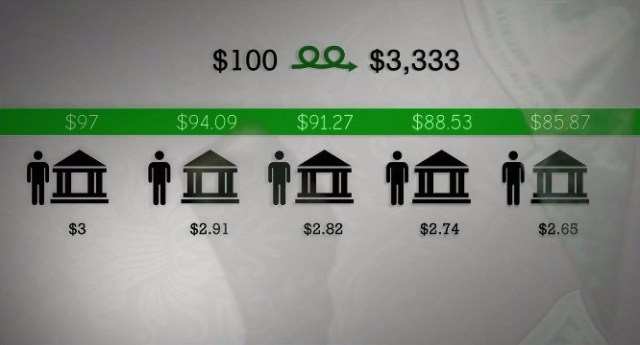 $94.09 of this can be loaned out, and again, and again, so the $100 turns into $3333? Money is magically generated based upon debt and trust to repay, known as fractional reserve banking.
$94.09 of this can be loaned out, and again, and again, so the $100 turns into $3333? Money is magically generated based upon debt and trust to repay, known as fractional reserve banking.


 Like most people I had heard about Bitcoin, Crypto Currencies and Block chain over the past few years, unlike most though I decided to take the plunge and jump in feet first with little knowledge and invested £100 into Bitcoin the night before Brexit (which sounds like a Children’s Story book title!).
Like most people I had heard about Bitcoin, Crypto Currencies and Block chain over the past few years, unlike most though I decided to take the plunge and jump in feet first with little knowledge and invested £100 into Bitcoin the night before Brexit (which sounds like a Children’s Story book title!). What is Money?
What is Money?
 Swedish webbing pouch set, however there has been a further two week delay and the suppliers.
Swedish webbing pouch set, however there has been a further two week delay and the suppliers.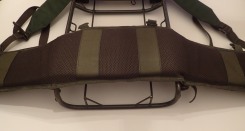 Using the original LK-35 frame I loosened the original back rest strap and passed it through the new Hip belt details in
Using the original LK-35 frame I loosened the original back rest strap and passed it through the new Hip belt details in 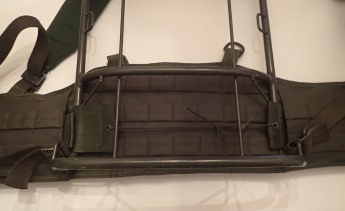

 straps and paracord at the bottom, this meant no free movement of the belt.
straps and paracord at the bottom, this meant no free movement of the belt.

 I would probably make a new one in olive paracord, I think the function stack of this is that it can be removed and used as a bracelet or be transferred to another unit as a carrying device, and of course the unravelling of the cord for any other use in emergencies. the only down side that I anticipate it the noise potential of the shackle against the frame but this could be overcome with wrap on the frame in that area. Using an idea from McQ Bushcraft to line the inner section of the bag with foam to:
I would probably make a new one in olive paracord, I think the function stack of this is that it can be removed and used as a bracelet or be transferred to another unit as a carrying device, and of course the unravelling of the cord for any other use in emergencies. the only down side that I anticipate it the noise potential of the shackle against the frame but this could be overcome with wrap on the frame in that area. Using an idea from McQ Bushcraft to line the inner section of the bag with foam to: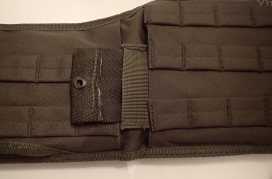 Using the the hip belt and webbing back rest strap from the LK-35 the hip setup was fixed to the
Using the the hip belt and webbing back rest strap from the LK-35 the hip setup was fixed to the 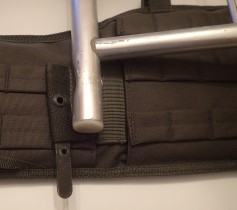 bottom of the frame utilising the hole for the original hip belt.
bottom of the frame utilising the hole for the original hip belt. 





 Lee on the
Lee on the 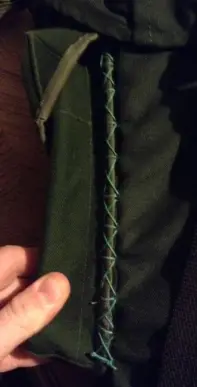


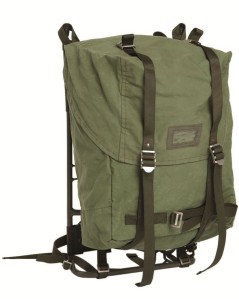 The basic pack can be sourced for as little as
The basic pack can be sourced for as little as 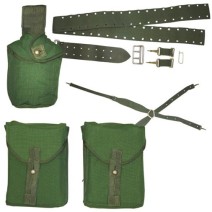 with the
with the  I managed to pick up a olive green MOLLE version for £17.95 which I think will be a good fit providing further MOLLE options to attach onto the belt itself..
I managed to pick up a olive green MOLLE version for £17.95 which I think will be a good fit providing further MOLLE options to attach onto the belt itself..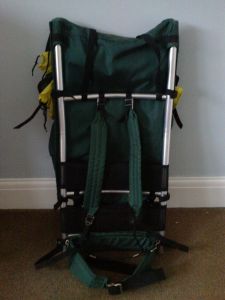 On eBay I also found a low cost old aluminium frame rucksack to test out the difference between the traditional LK frame.
On eBay I also found a low cost old aluminium frame rucksack to test out the difference between the traditional LK frame. Since starting on the Paleo journey, the one thing that had been playing on my mind was Cholesterol levels, knowing they were high at the start of this journey, my concern was that they could potentially get worse.
Since starting on the Paleo journey, the one thing that had been playing on my mind was Cholesterol levels, knowing they were high at the start of this journey, my concern was that they could potentially get worse. In my basic research there are no specific foods that
In my basic research there are no specific foods that  Fatty fish, such as salmon, tuna, trout, herring, sardines, and mackerel, contain omega-3 fatty acids (also shown to lower triglycerides).
Fatty fish, such as salmon, tuna, trout, herring, sardines, and mackerel, contain omega-3 fatty acids (also shown to lower triglycerides).
